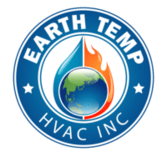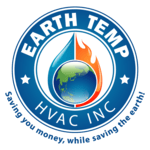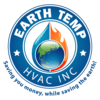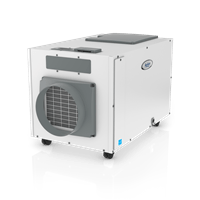3 Tips For Summer Indoor Humidity
Top 100 HVAC Blogs
More issues arise from high indoor humidity than just being uncomfortable in your home. Mold and mildew will thrive in humidified environments, and toxins will have an easier time staying in the air, potentially causing allergy flare-ups or respiratory illness. Fortunately, you can tune up your central air conditioner this summer to reduce the humidity in your house.

1. Whole-House Dehumidifier
The most critical feature of any HVAC device for extracting moisture from the air is a whole-house dehumidifier. This easy add-on could be everything you need to keep your home’s air cool and dry if your central heating and air doesn’t already have one. Different types of humidifiers are available, so think about your choices before buying one for your home.
There are two types of whole-house dehumidifiers: compressor dehumidifiers and desiccant dehumidifiers. Compressor dehumidifiers are similar to air conditioners in that they use refrigeration to remove moisture from the air. Desiccant variants extract moisture from the air using an absorbent drum or pad.
Since compressor models must be cooler than the ambient air to operate, desiccant dehumidifiers are recommended if the area of your home where they will be located stays cool. Desiccant dehumidifiers are much quieter than compressor dehumidifiers. Compressor dehumidifiers have the benefit of using less electricity. Consult a specialist to determine which option is best for you.
2. AC Evaporator Coil Should Be Clean
In most central heating and air systems, the evaporator coils are located above the furnace and air handler. These coils circulate refrigerant to cool the air blown over them by the air handler, but they also help to dehumidify your house. Moisture in the air condenses on the cold coils and drips into a drain pan below them as hot air touches them.
Your evaporator coils will struggle to cool and dehumidify the air if they are dirty. In most situations, scrubbing the evaporator coils with a hard bristle brush or spraying them down with compressed air would suffice. You can buy a commercial coil cleaner to clean your coils if they’ve corroded or are caked with stubborn dust and debris.
The coils would be safer if there are less pollutants in the air that flows over them. Maintain your furnace filter between cleanings to ensure your coils have the longest possible life. To prevent dust from stealing efficiency from your evaporator coils, clean or replace the furnace filter at least once a month.
3. Recharge the Refrigerant
However if your evaporator coils are clean, if there isn’t enough refrigerant flowing through them, they won’t be able to do their job. Although you won’t be able to charge the refrigerant in your air conditioner yourself, you can keep an eye out for popular problems. Low-refrigerant evaporator coils will not absorb moisture from the air, allowing moisture to accumulate in your home’s spaces.
Low refrigerant levels may also cause your air conditioner to blow warm air. If the air from your vents isn’t cold after running the air conditioner for 15 to 20 minutes, you might assume that low refrigerant is to blame.
Ice buildup on the outdoor condenser is another indicator of a low refrigerant charge. Ice can form around any points in your system where refrigerant might be leaking, such as the coolant tank connectors or refrigerant lines. To stop high humidity, hire a professional to make sure your machine has enough refrigerant.
No matter how hot the air is where you work, high indoor humidity isn’t an issue you’ll have to deal with. If your indoor air is too hot, keep these tips in mind and contact Earth Temp HVAC, Inc. so that our professional technicians can help you restore comfort to your home’s air.











